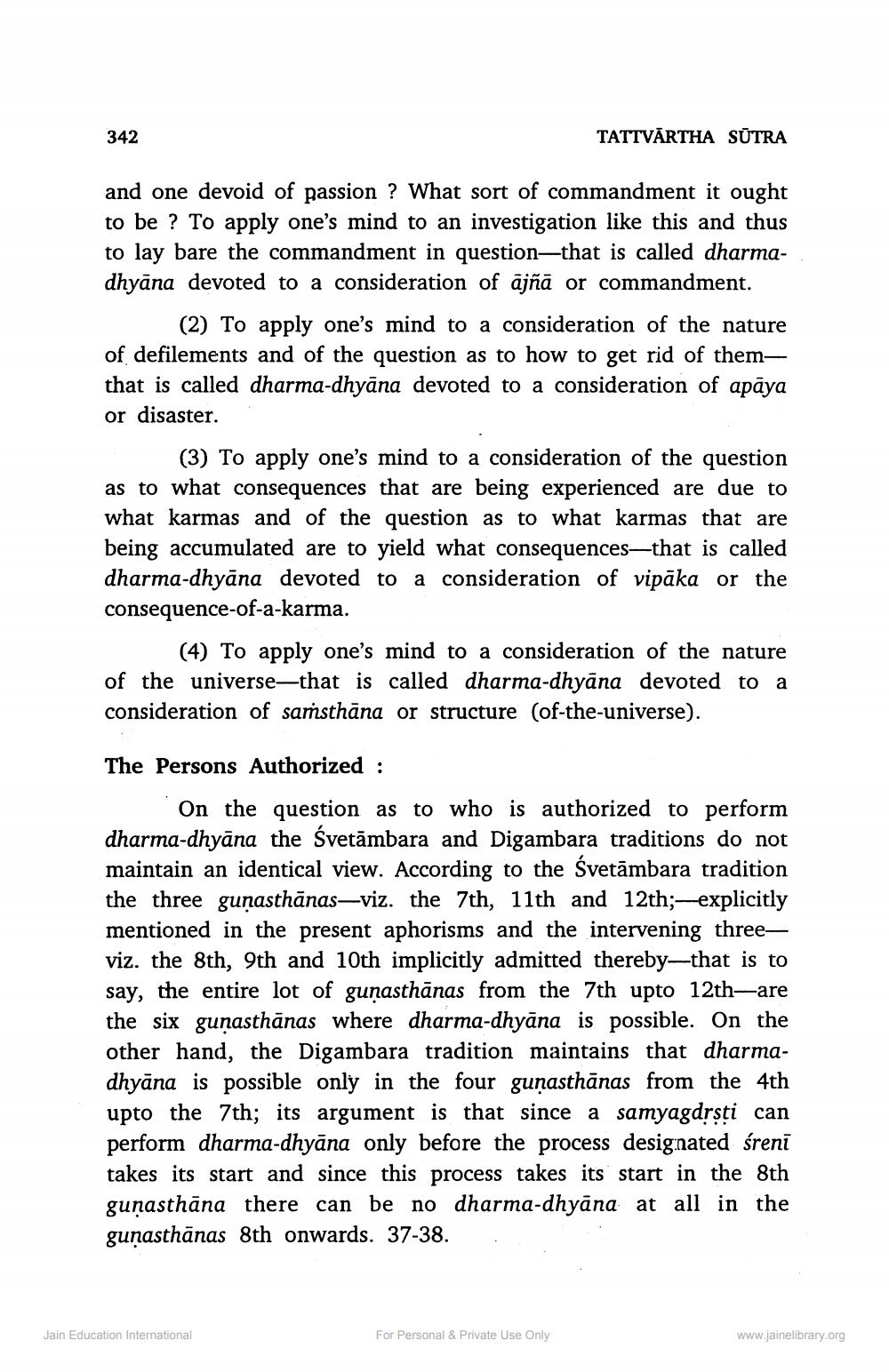________________
342
TATTVĀRTHA SŪTRA
and one devoid of passion ? What sort of commandment it ought to be ? To apply one's mind to an investigation like this and thus to lay bare the commandment in question—that is called dharmadhyāna devoted to a consideration of ajñā or commandment.
(2) To apply one's mind to a consideration of the nature of defilements and of the question as to how to get rid of them, that is called dharma-dhyāna devoted to a consideration of apāya or disaster.
(3) To apply one's mind to a consideration of the question as to what consequences that are being experienced are due to what karmas and of the question as to what karmas that are being accumulated are to yield what consequences—that is called dharma-dhyāna devoted to a consideration of vipāka or the consequence-of-a-karma.
(4) To apply one's mind to a consideration of the nature of the universe—that is called dharma-dhyāna devoted to a consideration of samsthāna or structure (of-the-universe).
The Persons Authorized :
On the question as to who is authorized to perform dharma-dhyāna the śvetāmbara and Digambara traditions do not maintain an identical view. According to the Svetāmbara tradition the three gunasthānas-viz. the 7th, 11th and 12th; -explicitly mentioned in the present aphorisms and the intervening threeviz. the 8th, 9th and 10th implicitly admitted thereby-that is to say, the entire lot of guṇasthānas from the 7th upto 12th—are the six guṇasthānas where dharma-dhyāna is possible. On the other hand, the Digambara tradition maintains that dharmadhyāna is possible only in the four guṇasthānas from the 4th upto the 7th; its argument is that since a samyagdrsti can perform dharma-dhyāna only before the process designated śreni takes its start and since this process takes its start in the 8th gunasthāna there can be no dharma-dhyāna at all in the gunasthānas 8th onwards. 37-38.
Jain Education International
For Personal & Private Use Only
www.jainelibrary.org




